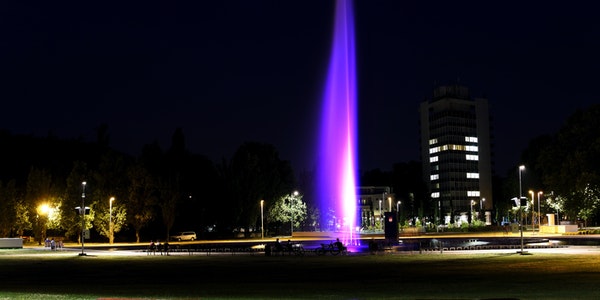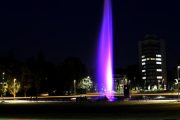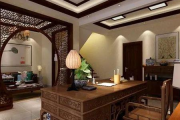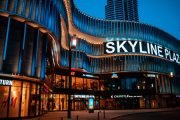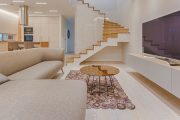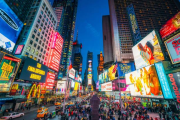Lighting can change the appearance of the living environment and the natural environment, and can also use modern high-tech lighting design techniques to brighten the space attributes.
Waterscape Lighting Design
In the lighting design concept of the waterscape environment, the pursuit of waterscape lighting is not the brightness, but the creative design of art.
1. The basic way of waterscape lighting
water lighting
This is how lighting fixtures are installed on water structures to illuminate the water surface.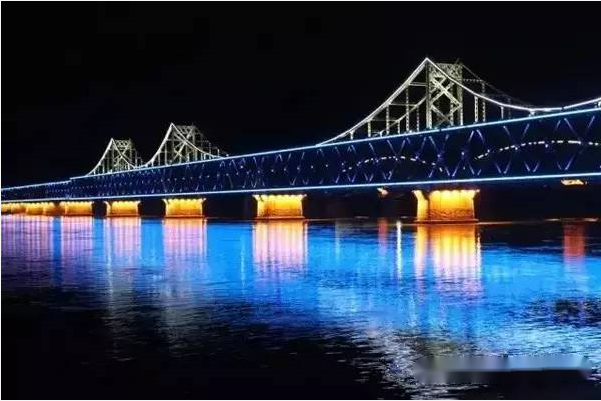
The advantage of water lighting is that it is more economical, and the installation and maintenance of lamps are relatively simple. If the lamps are arranged properly, the water surface can have a relatively uniform illumination. The disadvantage is that the dramatic effect of waterscape lighting in this lighting method is often better than underwater lighting. Somewhat inferior. Moreover, if people can directly see the light source or see the image of the light source on the water surface, it is easy to produce glare, so attention should be paid to the design.
underwater lighting
This is to set the light fixture below the water surface to illuminate the water body. This type of lighting tends to produce magically dramatic lighting effects that make dynamic bodies of water appear more colorful.
However, since the lamps are arranged underwater, the lamps are required to have water resistance and corrosion resistance. Moreover, it also has the strength to resist external mechanical shocks such as waves, and the cost of the lamp itself and the maintenance cost are high.
2. Classification of waterscape lighting
Fountain Landscape Lighting
The lighting design of the fountain should consider the influence of the spout form, water shape, spray height, quantity, combination pattern and other factors.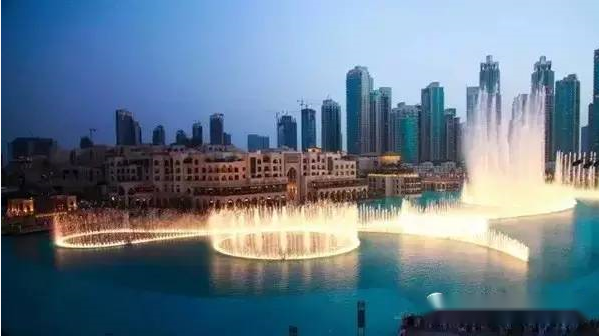
Generally speaking, bottom-up lighting is preferred for fountain lighting. When arranging lamps, it should be ensured that each water flow has at least one lamp to match, especially for fountains with water-shaped shapes, it should be ensured that the water shape of the fountain is correctly displayed. For a combined fountain with multiple spouts, it is not necessary to set lamps at each spout, and it should be designed according to the overall shape.
Waterfall Landscape Lighting
If it is a relatively steep, turbulent water flow, you should choose a bottom-up lighting method. If it is a relatively gentle water flow, it is advisable to install lighting fixtures in front of the water body.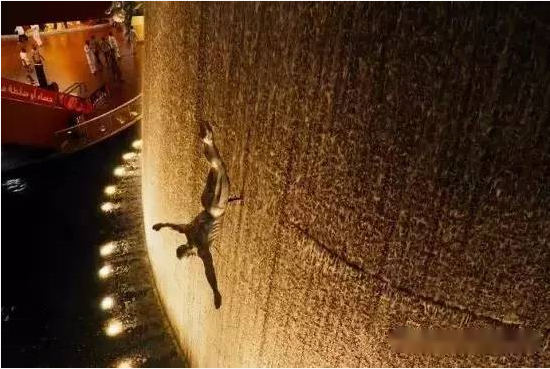
The lamps and lanterns should be selected according to the height and water volume of the waterfall. For waterfalls with a small amount of water, lamps are placed in front of the flowing water to illuminate the water curtain. For waterfalls with a large amount of water, arrange the lamps in the falling water, so that the dynamic effect of the water will become more intense due to the effect of light.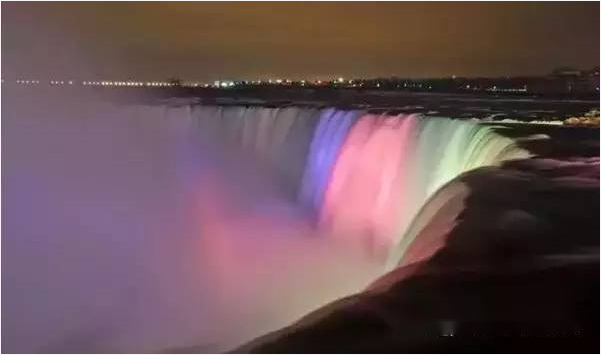
For waterfalls with small drop, it is advisable to use lamps with wide beams to illuminate upwards. For waterfalls with large drop, lamps with high power and narrow beam should be used. In order to achieve a uniform lighting effect, the lamps can be arranged in groups.
Artificial pond type reflective waterscape landscape lighting
The lighting of the pool-like reflective waterscape can be arranged at the bottom of the pool or around the pool. If lamps are arranged at the bottom of the pool, the graphics and materials of the pool bottom or pool wall are the landscape that the lighting should focus on. These parts should use materials with high reflectivity, but if the reflectivity is too high, the overall light composition will appear too obtrusive. At this time, you can adjust the power of the light source and choose a light source with a small wattage to achieve a relative balance. The lighting of lamps installed outside the pool can achieve the effect of water surface lighting.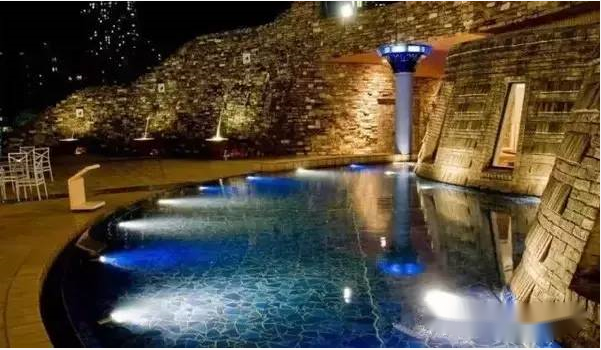
The stream shape is an extension of the waterscape, adding a sense of hierarchy to the garden. In the design of the lighting water stream and pond, a spray lamp with atomization function is set, so that the waterscape can have a dreamy feeling of smoky clouds and clouds. Spotlights can illuminate fountains or highlight aquatic plants. Floating lights and light stones are used to embellish the green grass around the pond. The shimmering light sets off the garden pond, more like a dream.
Rivers, lakes, seas, natural waterscapes, landscape lighting
For natural waterscapes such as rivers, rivers, lakes and seas, it is impossible to illuminate the entire water body. The design mainly uses reflective shore scenery to highlight the existence and landscape effect of the water body.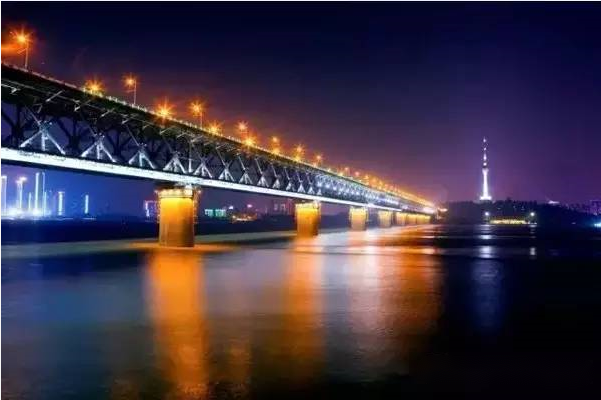
In order to improve the visibility and appreciation of waterscape lighting and create an atmosphere of waterscape light environment, choose LED light source lamps, use LED lamps with small size, special shape, good concealment, long light source life, changeable color and low working voltage, etc. advantage.
Residential District Road Lighting
The modern community not only has reasonable planning and design, complete functions and complete supporting facilities, but also has a beautiful environment, which is deeply loved by urban residents. The effect of the lighting of the residential area on the residential environment, especially the night scene environment, has been paid more and more attention by people. This part mainly analyzes several aspects that need to be paid attention to in the design of residential road lighting.
1. Lamp type design
Since the width of the residential road is generally 3-5 meters, it is not suitable for driving and lifting vehicles. In order to consider the convenience of maintenance, courtyard lamps with a lamp height of 2.5-4 meters are generally used for lighting in the community. This allows maintenance personnel to carry a short ladder to carry out maintenance.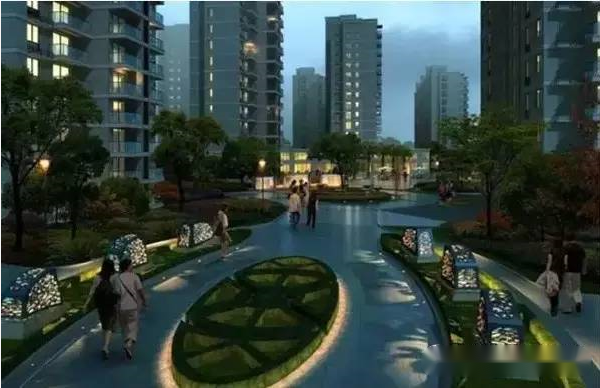
In order to ensure that the road lighting in the residential area is bright, it can also create an elegant atmosphere for the area during the day. The selection of garden lights should be coordinated with the architectural style and environmental atmosphere of the community, and strive to make the combination of “light and shadow” rich in melody. Therefore, this type of lamp can have greater freedom to pursue the aesthetics of the overall lamp type in the design.
At the same time, the lamps should have good safety and prevention. Next to trees with larger canopies, try to avoid choosing garden lights with cantilevered arms. The shape of the lamps should also be simple and smooth, and there should not be too many decorations, otherwise it is easy to produce spider webs in summer. In order to prevent bugs from entering the lamp, the protection level of the lamp should not be lower than IP33.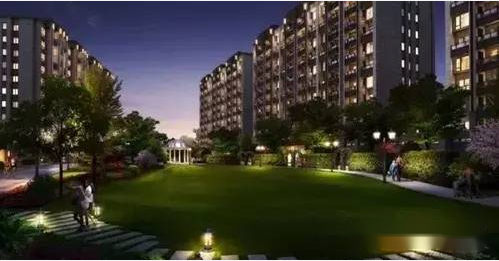
In addition, in the community, if the green belt is a large area of lawn and short flowers, then the omnidirectional diffused lamps (without reflectors) will be uncomfortable. When choosing the material of the garden light, you can choose steel pipe, cast aluminum, stainless steel and other materials. Since the residential lamp post has low requirements on mechanical strength, more stainless steel materials with beautiful appearance but slightly lower strength can be considered.
2. The choice of light source
LED lights with high efficiency and long life are generally used in road lighting design. However, there are differences in residential lighting design. Since the residential area (except the main road, main entrance, and public living area) requires a quiet environment, the cool color light source is more likely to give people a quiet feeling. Therefore, LED lights with a color temperature of 2700K~3500K are generally used for lighting in the community, which can make the whole community rich in layers and provide a soft outdoor environment for low-rise housing.
In addition, the average illumination of general residential roads is around 5-10Lux. However, vehicles and people in the community travel relatively slowly, so the community lighting does not limit glare, and non-cutting lamps can be used. At the same time, because the light of the non-cutting lamps not only shoots to the ground, but also shoots to other working surfaces (such as walls, woods, buildings, etc.), which has a certain environmental lighting effect.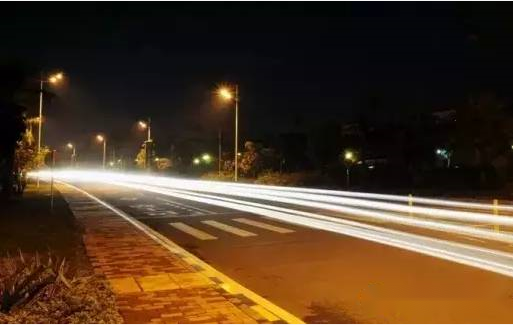
Numerically, residential lighting is much dimmer than road lighting, which is not the case. It’s just that the road has certain requirements for brightness uniformity (the ratio of the minimum brightness to the average brightness), which is generally not less than 40%. Because for fast-moving vehicles, obvious changes in brightness can easily cause visual errors or even temporary loss of vision, resulting in traffic accidents.
However, vehicles and people in the community travel relatively slowly. For residential communities, the concept of brightness uniformity has no practical significance. Therefore, some main entrances and exits, intersections, and public areas in residential quarters have high brightness, while other places have low brightness. Therefore, the average brightness is lower.
3. Layout of lamp positions
The arrangement of lamp positions should be consistent with the road planning of the community. Due to the complex road conditions of the residential roads, with many intersections and bifurcations, the residential lighting should have a better visual guidance effect, and generally use one-sided layout. In the main roads and entrances and exits of residential areas with wider roads, double-sided layout can be adopted. Light positions should be arranged at the intersections of roads and where there are major changes in the road to give play to the inductiveness of the light to the road.
In addition, when designing residential lighting, care should be taken to avoid adverse effects of outdoor lighting on the indoor environment of residents. It is obviously inappropriate if the lamp position is too close to the balcony and window without being blocked. This is mainly controlled by selecting reasonable lamps and appropriate lamp positions. For example, try to arrange the lamps in the green belt on the side of the road away from the residential building.
In the green scenic spots, the combination of garden lights and lawn lights can be used to arrange lighting. The use of floodlights to render the environment is generally not considered in residential areas because it can easily cause light pollution to surrounding residents.
4. Power supply, distribution and control of residential lighting
For residential areas with a small area, the lighting distribution box is generally located in the center of the area and transmits electricity to the surrounding areas. It is a hub-and-spoke type, the line is not long, but there are many branches. This form of power distribution often has more outgoing lines, but the load of each outgoing line is small and the transmission distance is short. In some large residential quarters, the number of lamps and lanterns is large, and the power transmission by only one distribution point often causes excessive voltage drop loss at the end due to the large transmission radius.
If the problem is solved only by increasing the cable diameter, the economic cost is too high. Therefore, the method of multi-point power transmission is adopted. This can not only solve the problem of pressure drop loss, but also simplify the pipeline network, which is conducive to the maintenance of pipelines in the future. After the distribution points are connected with control cables, they can be incorporated into the street light control network, and can also be equipped with “wireless three-remote” control equipment if conditions permit.
With the advancement of science and technology and the development of society, the wide application of various related science and technology in lighting products, especially related advanced light source products and energy-saving products (such as the promotion and use of LED light sources) affects some of our original concept.
How to improve and improve the road lighting design of residential quarters to create a more comfortable living environment for urban residents. This is exactly the subject that designers need to study continuously.
(To Be Continued)

